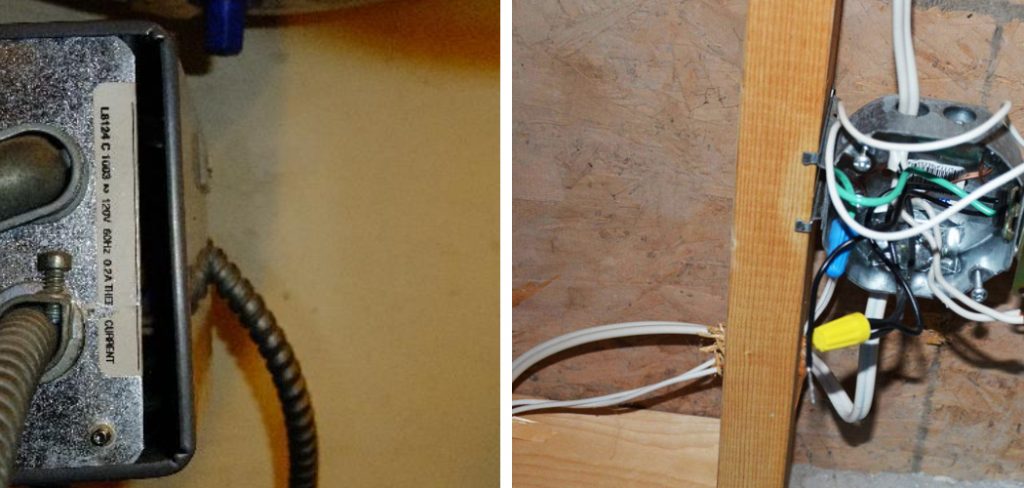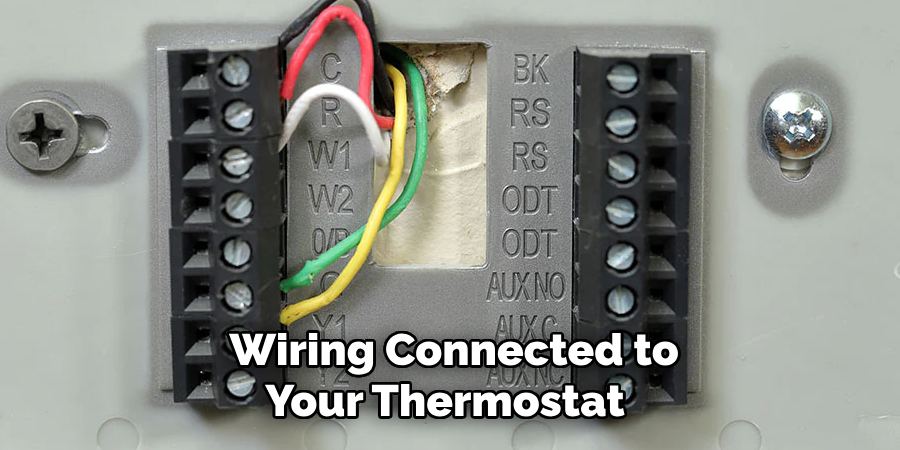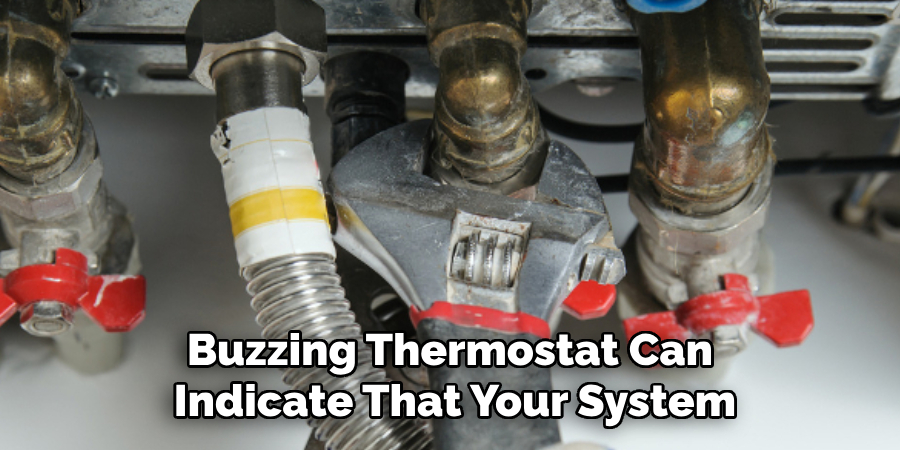Thermostats are an integral part of any HVAC system, allowing you to set the temperature and control the environment in your home. However, there are times when they can malfunction, leading to issues like buzzing noises.

Such noises can be annoying, distracting, and indicative of a bigger problem in your home’s heating and cooling systems. Fortunately, you don’t have to call a professional every time your thermostat starts buzzing. In this guide, we’ll provide you with effective solutions for how to fix a buzzing thermostat.
Can You Fix a Buzzing Thermostat?
A buzzing thermostat is not only annoying but can also be quite concerning. If you are experiencing this issue, it’s important to address it as soon as possible. While there isn’t a definitive fix for every type of buzzing thermostat, you can try a few things to troubleshoot the issue.
Firstly, ensure the thermostat is securely mounted to the wall, and the wires are properly connected. It’s also worth inspecting the wiring for any signs of damage or wear and tear. If the buzzing continues, it may be best to consult a professional HVAC technician who can diagnose and fix the problem more effectively. Don’t let a buzzing thermostat ruin your comfort or peace of mind – take action and find a solution that works for you.
Why Should You Fix a Buzzing Thermostat?
A buzzing thermostat may seem like a minor inconvenience, but it can actually have significant consequences for your home’s heating and cooling system. This buzzing may indicate a wiring issue or a malfunctioning component, which can cause your HVAC system to work less efficiently.
This means it will take longer to reach your desired temperature, leading to increased energy bills and unnecessary wear and tear on your HVAC system. By fixing a buzzing thermostat, you can improve the comfort of your home and save money in the long run by ensuring your heating and cooling system is working at optimal levels.
How to Fix a Buzzing Thermostat: A Comprehensive Guide
1. Replace the Thermostat with A Newer Model
Sometimes, the simplest solution to a buzzing thermostat is to replace it with a newer model. Old thermostats can malfunction or become incompatible with new HVAC systems, leading to buzzing or other issues. Before you go out and buy a new one, ensure it’s compatible with your current HVAC system. If you’re unsure, consult an HVAC professional for their advice.
2. Check the Voltage
Another probable cause of a buzzing thermostat is voltage problems. You’ll need a multimeter to measure the voltage output to your thermostat. Make sure to shut off power to the system before you start. If the voltage reads low or fluctuates, there may be an issue with the wiring or electrical connections that supply power to the thermostat. In that case, hire an electrician to inspect the wiring and fix any potential problems.
3. Check the Wiring
The wiring connected to your thermostat can also cause buzzing if it’s loose, damaged, or improperly connected. To check the wiring, turn off the power to the system, remove the thermostat cover, inspect the wiring, and tighten any loose connections. If the wiring is damaged, contact an HVAC professional to repair or replace it. Additionally, ensure that the wires are connected correctly as per the manufacturer’s instructions.

4. Check for Dirt and Debris
Another cause of buzzing thermostats is the accumulation of dirt or debris inside the thermostat. Over time, dirt and debris can build up around the wires and cause a short, leading to a buzzing sound. To solve this, remove the thermostat cover and use compressed air or a soft brush to clean any dirt or debris attached to it. Once done, reattach the cover and turn the power back on to check whether the buzzing noise has stopped.
5. Check the Positioning
Sometimes, the positioning of the thermostat can cause buzzing. To fix this issue, ensure the thermostat is level and adequately positioned. If the wall is not even, use a bubble or Spirit level to adjust the positioning of the thermostat. Additionally, ensure that no objects, like furniture, curtains, or decorative items, obstruct the thermostat. If that doesn’t fix the buzzing, hire an HVAC professional to inspect the system.
6. Consider Installing a Transformer
If the buzzing persists, it might be due to inadequate voltage supply or fluctuations in power. In such cases, installing an external transformer can help stabilize the voltage and eliminate the buzzing sound. Consult an HVAC professional for expert advice on which type of transformer suits your system.

7. Contact a Professional
If none of the above steps work, contacting a professional HVAC technician is best. They have the expertise and knowledge to diagnose and fix any issue with your thermostat. It’s essential to address a buzzing thermostat promptly, as it can cause further damage to your HVAC system if left unattended.
5 Considerations Things When You Need to Fix a Buzzing Thermostat
1. Check the Batteries
One of the first things to check when your thermostat is buzzing is the batteries. If your thermostat is battery-powered, then it may be time to replace them. You should also ensure that you are using the correct type of batteries for your thermostat – some require special types of batteries that are not available in regular stores. If you are unsure what type of battery your thermostat requires, consult the user manual or contact the manufacturer for assistance.
2. Cleaning and Dusting
It is also important to keep your thermostat clean and dust-free, as dust and dirt can cause it to malfunction. Use a soft cloth or brush to gently remove any dust or debris from around the buttons and knobs on the thermostat. Additionally, if there are any vents on your thermostat, use a vacuum cleaner with a brush attachment to clean out any dust or dirt that may have built up inside them.
3. Check Wires and Connections
If cleaning and replacing batteries do not solve the problem, then you should check all wires and connections leading to and from your thermostat. Ensure all wires are securely connected, with no loose ends or frayed edges visible. Use electrical tape to secure any loose connections before testing again.
4. Replace Damaged Parts
If everything appears normal, but your thermostat still buzzes, you may need to replace one of its components, such as a switch or fuse box cover plate. When replacing parts on your own, make sure that you purchase compatible components from a reputable supplier, as this will help ensure that they work correctly with your system. Additionally, always follow safety procedures when working with electricity, as it can be dangerous if handled improperly.

5. Call an Expert
If none of these solutions solve the problem with your buzzing thermostat, it may be time to call an expert for assistance. A qualified technician will be able to diagnose the issue more accurately and offer advice on how best to resolve it quickly and safely.
Benefits of Fix a Buzzing Thermostat
There are few things more frustrating than a buzzing thermostat. It’s distracting annoying, and can make it difficult to relax in the comfort of your own home. But did you know that fixing a buzzing thermostat can offer several benefits? For one, it can save you money on your energy bills.
A buzzing thermostat can indicate that your system is working harder than it needs to, which can drive up your energy usage and costs. Additionally, fixing a buzzing thermostat can help improve the overall performance of your HVAC system, ensuring that your home stays at a comfortable temperature all year. So, if you’re dealing with a buzzing thermostat, don’t wait – call in a professional to help you fix the issue today.

Some Common Mistakes People Make When Trying to Fix a Buzzing Thermostat
Your home’s thermostat is an essential part of your heating and cooling systems, so when it starts buzzing, it can be frustrating. You might be tempted to take matters into your own hands and fix the problem yourself, but be careful. People make a few common mistakes when trying to fix a buzzing thermostat that can make the problem worse. For example, some people try to tighten the thermostat’s screws, but this can actually cause the buzzing to get worse.
Others tried to replace the batteries, but it turned out that the buzzing was caused by a loose wire all along. If you’re not sure how to fix a buzzing thermostat, it’s always best to call a professional HVAC technician who can identify and correct the problem safely and effectively.
Conclusion
A buzzing thermostat can be a real annoyance, but fortunately, many potential issues can be resolved quickly and easily. In most cases, checking for voltage, wiring, debris, positioning of the thermostat, and replacing it with a newer model can fix the issue. If none of these solutions work, you might need to call an HVAC professional to help you troubleshoot the problem effectively. Remember to follow safety guidelines and consult with a professional before fixing the issue yourself. With these tips, you can restore peace and quiet to your home quickly. Thanks for reading our post about how to fix a buzzing thermostat.
